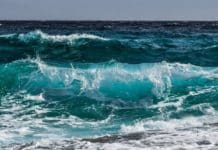
Aug. 25 (UPI) — A new study at Wake Forest University suggests the loss of sardines around the Galapagos Islands because of rising ocean temperatures has had a profound effect on the Nazca booby, and the effect is expected to get worse.
The Nazca booby is a tropical seabird whose diet consists primarily of sardines.Rising ocean temperatures around the Galapagos Islands are expected to rise significantly making the water too warm for a key prey species of sardines to tolerate.
The study, published Aug. 23 in Plos One, is an analysis of how the absence of sardines has effected the diet, breeding and survival of Nazca boobies. The new study is part of a long-term study at Isla Espanola in the Galapagos Islands for more than 30 years.
Researchers found that in 1997 sardines disappeared from Nazca booby diet samples and were replaced by the less-nutritious flying fish.
When the flying fish replaced sardines in the boobies’ diet, reproductive success was reduced by half, according to researchers.
“If the current links between diet and reproduction persist in the future, and rising ocean temperatures exclude sardines from the Galápagos, we forecast the Nazca booby population will decline,” Emily Tompkins, a student at Wake Forest, said in a press release.
The research increases the understanding of a species’ response to climate change in tropical oceans, researchers said, and suggests that other Galapagos predators that do well when sardines are available have to make adjustments.
“Few connections have been made between ocean warming and population effects in the tropics, making this study significant,” said David Anderson, a professor of biology at Wake Forest.






